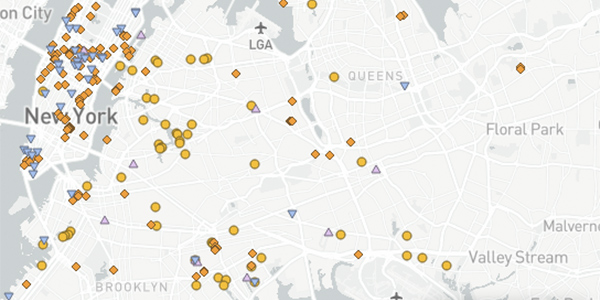NYISO staff on Monday shared with stakeholders proposed interconnection processes for the market participation options the ISO has floated in its effort to integrate hybrid storage resources (HSRs) into its energy and capacity markets.
Kanchan Upadhyay and Amanda Myott, energy and capacity market design specialists, respectively, presented the ISO’s ideas to the Installed Capacity/Market Issues Working Group during a teleconference.
The ISO is proposing three interconnection options for HSRs:
- Option 1 would allow HSRs to participate in the markets as distinct generators that share a point of interconnection;
- Option 2 would enable participation through an aggregation model to allow resource components within the HSR that share a point of interconnection to bid as a single resource;
- Option 3 would recognize an HSR as a self-managed energy storage resource that receives some or all of its energy from a connected renewable generator. (See NYISO Weighs Market Options for Hybrid Resources.)
Upadhyay covered the potential Energy Resource Interconnection Service (ERIS) process for HSRs. She said that for any new or proposed facilities proposing to interconnect as a hybrid resource, all resources behind the same point of interconnection (POI) could be included in a single interconnection request.
Distinct resources participating under Option 1 would have a separate ERIS for each unit, limited to the minimum of the capability of the inverters or the capability of the respective units.
Under the current proposal, “the injection limit of the HSR project must be greater than or equal to the combined capability of all resources within the project,” Upadhyay said. “The ISO is still evaluating a potential enhancement that would enable this option to accommodate HSR projects with an injection limit that is less than the combined capability of its component resources.”
If existing market rules need to be modified, such changes will be developed for a potential vote at the Business Issues Committee by the end of 2020, Upadhyay said.
ERIS Limits
While HSR units may be studied under a single request, they may require separate interconnection agreements since they are treated separately in the market, Upadhyay said.
Aggregate hybrid resources participating under Option 2 would have a single, combined ERIS limited to the minimum of the capability of the inverters or the total capability of the combined units.
Hybrid ESRs under Option 3 would have a single, combined ERIS limited to the minimum of the capability of the inverter or the capability of the storage component of the hybrid resource.
Stakeholders stressed the importance of allowing developers to specify lower interconnection limits than the total potential output of the inverters.
“There could very well be configurations under Option 2 that have multiple inverters, solar paired with storage in quite a few combinations,” said Bill Acker, executive director of New York Battery and Energy Storage Technology Consortium (NY BEST). “I think it was mentioned earlier that there was possibly some work on looking at how that might work with a collection of inverters. We would hope that it wouldn’t necessarily have to be the sum of all the inverters, that you could actually set up a solution like that.”
CRIS Limits
Myott led the discussion on capacity resource interconnection service (CRIS) awards for HSRs, whereby each distinct resource within an HSR may request CRIS individually up to the nameplate of the resource.
In response to a stakeholder question on the potential enhancement to Option 1 to allocate CRIS between the two resources, Myott said NYISO is investigating the topic in the event they are able to implement an inverter limit.
“We’re thinking through all of the implications in terms of the application and how feasible implementing that would be, particularly in the short term [when] we’re trying to make this option accessible for these types of resources,” Myott said.
The ISO hopes to come back with more details soon but is not sure when, she said.
Aggregate hybrid resources under Option 2 may request CRIS up to the minimum of the inverter limit or nameplate of the components that comprise the HSR. Hybrid ESRs under Option 3 may request CRIS up to the minimum of the inverter limit or nameplate of the storage component, she said.
Myott closed by noting that the ISO is working on responses to various stakeholder questions, which will be addressed at a future working group. Topics include additional information about Northeast Power Coordinating Council reserve requirements; clarification on the “front-of-the-meter” definition; exploration of a possible thermal-plus-storage model; examples with numbers to understand how many megawatts can participate under each market (energy, reg, reserves, capacity) under each proposed option; and clarification on which options the ISO will pursue.
Mitigation Review
Market Design Specialist Sarah Carkner presented an update on the ISO’s comprehensive review of buyer-side mitigation, which is part of the “Grid in Transition” initiative. (See N.Y. Looks at Grid Transition Modeling, Reliability.)
FERC in February narrowed the resources exempt from NYISO’s buyer-side market power mitigation (BSM) rules in southeastern New York, ordering the ISO to subject storage and demand response to a minimum offer floor in its capacity market. (See FERC Narrows NYISO Mitigation Exemptions.)
“We would like to move forward any concept as far as we can this year,” Carkner said. “Ideally, we would like to get the market design complete on any additional concepts for this project.”





